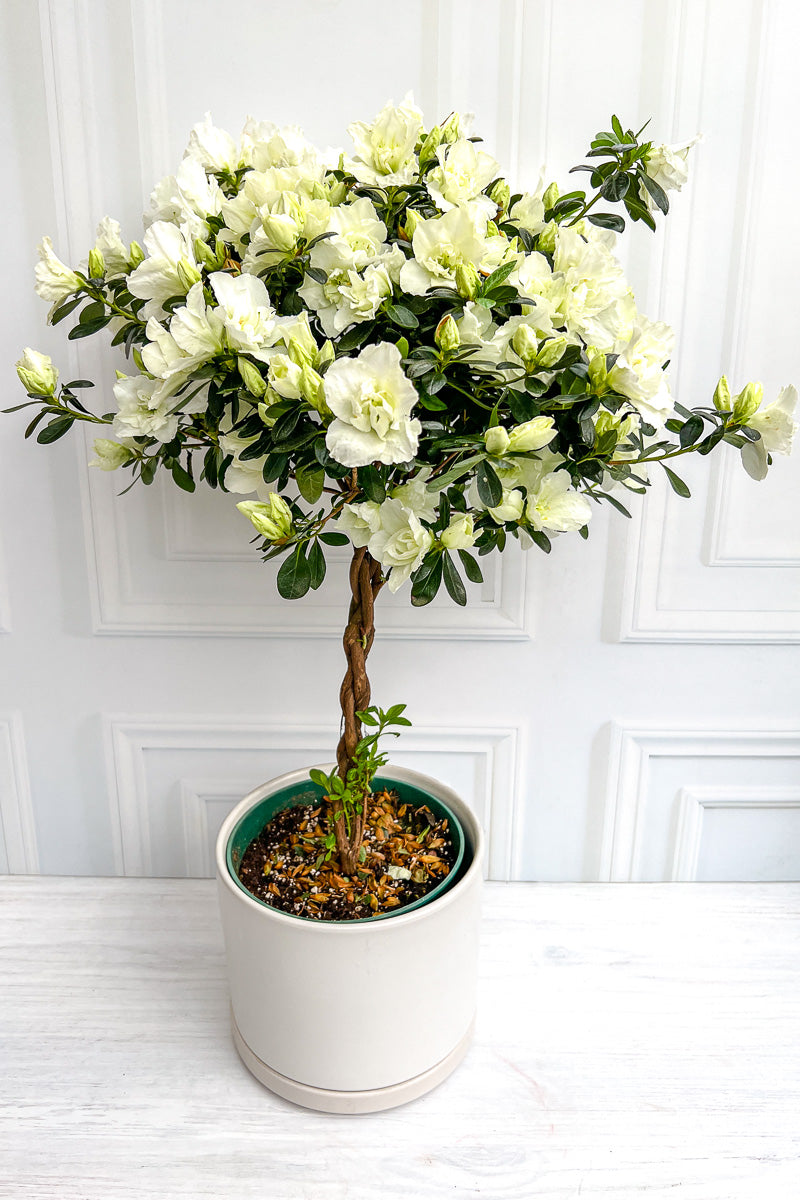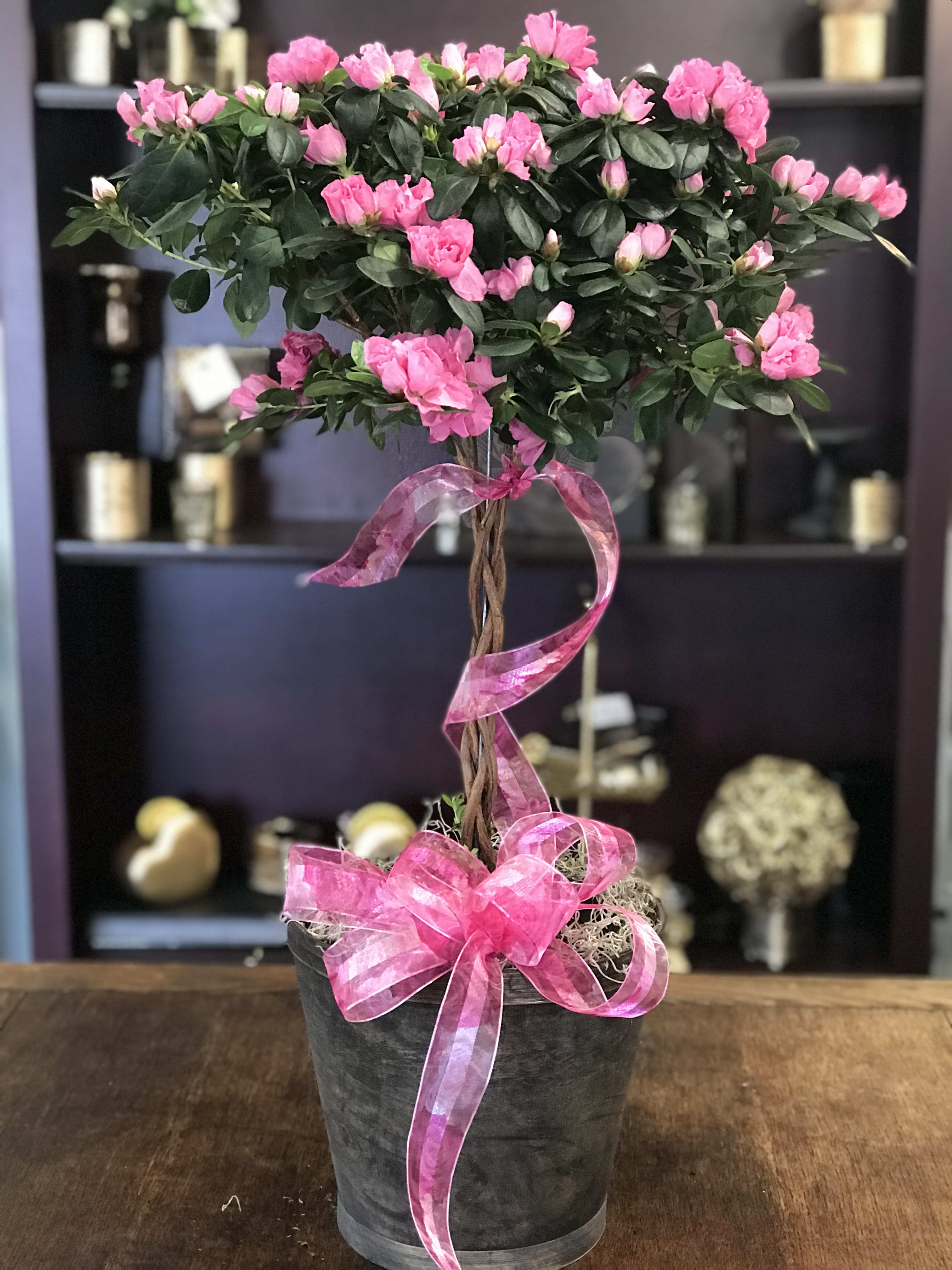“`html
The Comprehensive Guide to Azalea Trees: Cultivating Vibrant Blooms
Azaleas, with their breathtaking displays of colorful blossoms, are a beloved addition to gardens worldwide. While often referred to as shrubs, certain varieties can be trained or naturally grow into small trees, offering a unique and stunning focal point. This comprehensive guide delves into the world of azalea trees, covering everything from species selection and planting to care and common issues.
Understanding Azalea Trees: More Than Just Shrubs
The term “azalea tree” can be a bit of a misnomer. Most azaleas are indeed shrubs, characterized by their multi-stemmed growth and relatively low height. However, some species and cultivars, particularly those belonging to the larger Rhododendron genus (to which azaleas belong), can develop a more tree-like form with a distinct trunk. Furthermore, skilled pruning and training can encourage even shrubby varieties to take on a more arboreal appearance.
Key distinctions to remember:

Species Variation: Certain azalea species, such as some Rhododendron arborescens varieties, naturally grow taller and develop a single trunk, resembling small trees.
Pruning and Training: Through careful pruning, lower branches can be removed, and a dominant leader can be encouraged to create a tree-like shape.
Grafting: Grafting azalea scions onto taller, more robust rootstock can also create a tree-like form.
Choosing the Right Azalea Tree: Species and Cultivars
Selecting the appropriate azalea variety is crucial for success. Consider factors such as climate, desired size, bloom color, and growth habit. Here are some notable species and cultivars that lend themselves to tree-like forms:
Rhododendron arborescens (Sweet Azalea)
This deciduous azalea species is known for its fragrant white flowers and its ability to grow into a small tree, reaching heights of up to 15 feet. It thrives in moist, acidic soil and partial shade.
Rhododendron austrinum (Florida Flame Azalea)

A deciduous azalea native to the southeastern United States, this species produces vibrant orange or yellow flowers and can grow into a small, multi-trunked tree.
Rhododendron prunifolium (Plumleaf Azalea)
Known for its late-blooming red flowers, this deciduous azalea can develop a tree-like form with proper training. It prefers partial shade and acidic soil.
Evergreen Azaleas with Training
While most evergreen azaleas are shrubby, varieties like ‘Formosa’ or ‘Gable’ hybrids can be trained into small, single-trunked trees through careful pruning. This requires consistent effort over several years.
Planting Your Azalea Tree: Essential Considerations
Proper planting is fundamental to the health and growth of your azalea tree. Follow these guidelines for optimal results:
Timing

The ideal time to plant azaleas is in the spring or fall, when temperatures are moderate. Avoid planting during the heat of summer or when the ground is frozen.
Location
Azaleas thrive in partial shade, receiving dappled sunlight throughout the day. Avoid planting in full sun, especially in hot climates, as this can scorch the leaves and flowers. Morning sun and afternoon shade are ideal. Azaleas also require protection from strong winds.
Soil
Azaleas are acid-loving plants, requiring a soil pH between 4.5 and 6.0. Well-draining soil is essential, as azaleas are susceptible to root rot in soggy conditions. Amend the soil with organic matter, such as peat moss or compost, to improve drainage and acidity.
Planting Procedure
Dig a hole that is twice as wide and just as deep as the root ball. Gently remove the azalea from its container and loosen any tightly bound roots. Place the plant in the hole, ensuring that the top of the root ball is level with the surrounding soil. Backfill the hole with the amended soil and water thoroughly. Mulch around the base of the plant to retain moisture and suppress weeds.
Caring for Your Azalea Tree: Ensuring Healthy Growth
Proper care is crucial for maintaining the health and vigor of your azalea tree. This includes watering, fertilizing, pruning, and pest and disease control.
Watering
Azaleas require consistent moisture, especially during dry periods. Water deeply and regularly, ensuring that the soil remains evenly moist but not waterlogged. Use a soaker hose or drip irrigation to deliver water directly to the roots. Avoid overhead watering, as this can promote fungal diseases.
Fertilizing
Fertilize azaleas in the spring, just before new growth begins. Use an acid-forming fertilizer specifically formulated for azaleas or rhododendrons. Avoid over-fertilizing, as this can burn the roots. A slow-release fertilizer is ideal.
Pruning
Pruning is essential for shaping your azalea tree and promoting healthy growth. The best time to prune is immediately after flowering. Remove dead, damaged, or diseased branches. Prune to maintain the desired shape and encourage a single trunk. For tree training, remove lower branches gradually over several years. Pinch back new growth to encourage branching and a fuller form. Remove spent flowers (deadheading) to promote further blooming.
Mulching
Maintain a 2-3 inch layer of mulch around the base of the azalea tree. This helps to retain moisture, suppress weeds, and regulate soil temperature. Use organic mulch, such as pine needles, shredded bark, or compost.
Common Azalea Tree Issues: Pests and Diseases
Azaleas are susceptible to several pests and diseases. Regular monitoring and prompt action are essential for maintaining plant health.
Lace Bugs
These tiny insects feed on the undersides of leaves, causing stippling and discoloration. Insecticidal soap or horticultural oil can be used to control lace bugs.
Azalea Bark Scale
These small, white insects attach themselves to the bark and suck sap from the plant. Horticultural oil or systemic insecticides can be used for control.
Petal Blight
This fungal disease causes flowers to develop brown spots and become mushy. Fungicides can be used to prevent and control petal blight. Ensure good air circulation to reduce humidity.
Root Rot
Caused by overwatering or poorly draining soil, root rot leads to wilting, yellowing leaves, and eventual plant death. Improve soil drainage and avoid overwatering to prevent root rot.
Iron Chlorosis
This condition, characterized by yellowing leaves with green veins, is caused by iron deficiency, often due to alkaline soil. Amend the soil with iron sulfate or use a chelated iron supplement.
Training Azaleas into Trees: A Step-by-Step Approach
Transforming a shrubby azalea into a tree requires patience and consistent effort. Here’s a step-by-step guide:
Select a Suitable Candidate
Choose a vigorous azalea with a strong, upright central stem. Varieties that naturally grow taller are ideal.
Establish a Leader
Select the strongest, most upright stem to be the main trunk (leader). Remove any competing stems or suckers at the base of the plant.
Gradual Pruning
Over several years, gradually remove lower branches, starting with the lowest ones. Prune in late spring or early summer, after flowering. Avoid removing too many branches at once, as this can stress the plant.
Support and Training
Use stakes or supports to help the young tree maintain an upright growth habit. Tie the leader loosely to the stake, ensuring that it is not constricted. As the tree grows, continue to remove lower branches and maintain the desired shape.
Patience and Persistence
Training an azalea into a tree is a long-term project. It may take several years to achieve the desired form. Be patient and consistent with your pruning and training efforts.
Enhancing Your Garden with Azalea Trees
Azalea trees, whether naturally occurring or carefully trained, add a touch of elegance and beauty to any garden. Their vibrant blooms, attractive foliage, and unique form make them a captivating focal point. By following the guidelines outlined in this guide, you can successfully cultivate and enjoy these stunning plants for years to come.
Remember to select the right species, provide proper planting conditions, and maintain consistent care. With dedication and attention, your azalea tree will reward you with a spectacular display of color and grace.
“`


